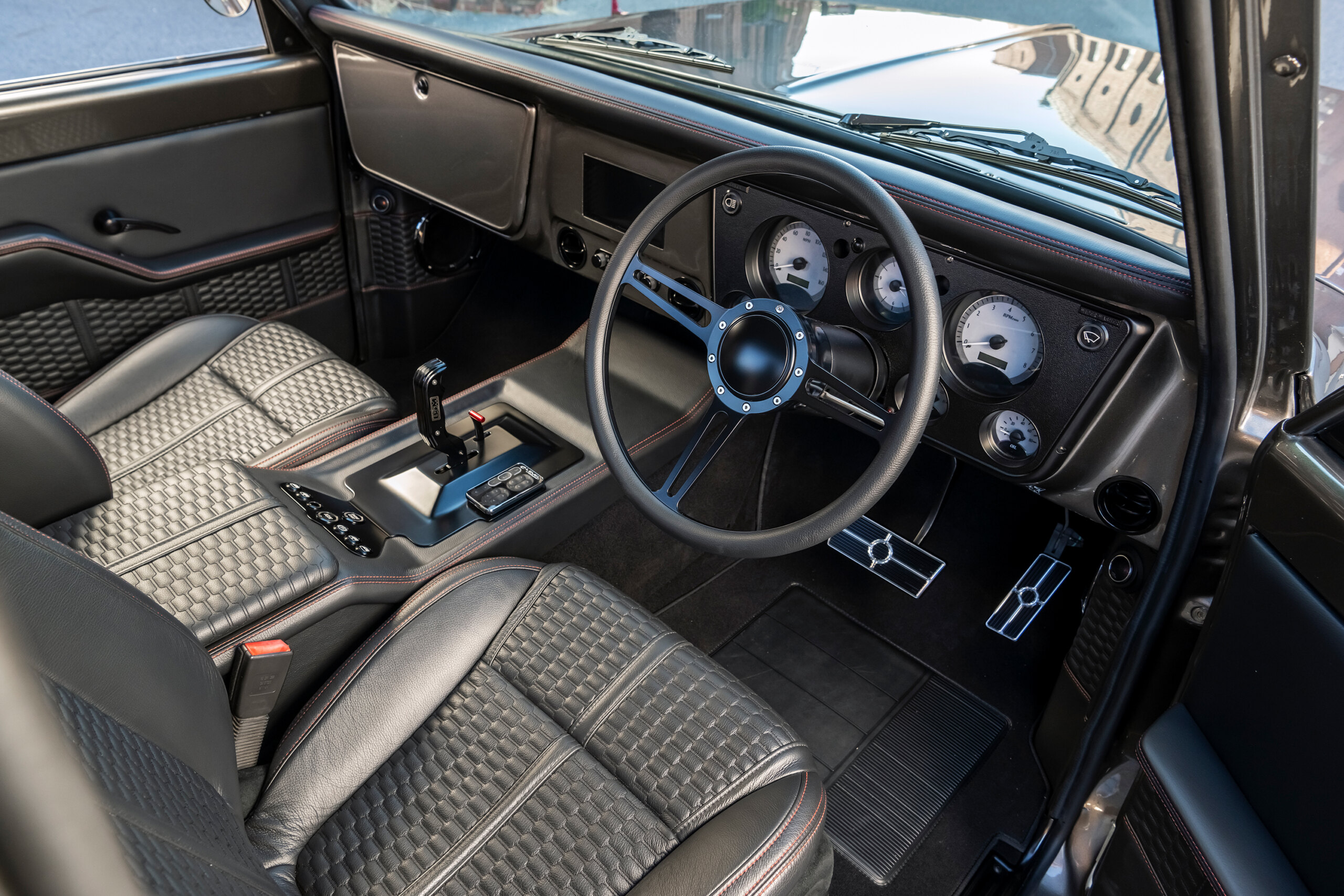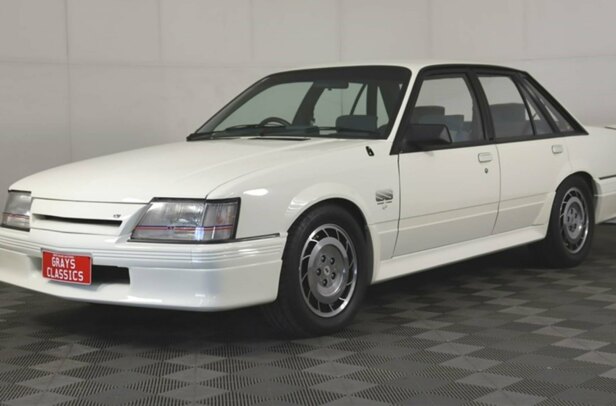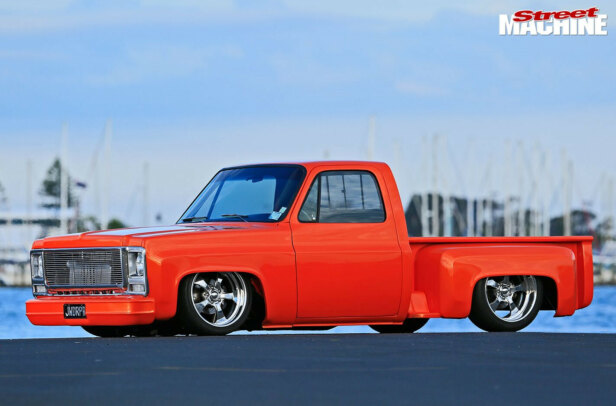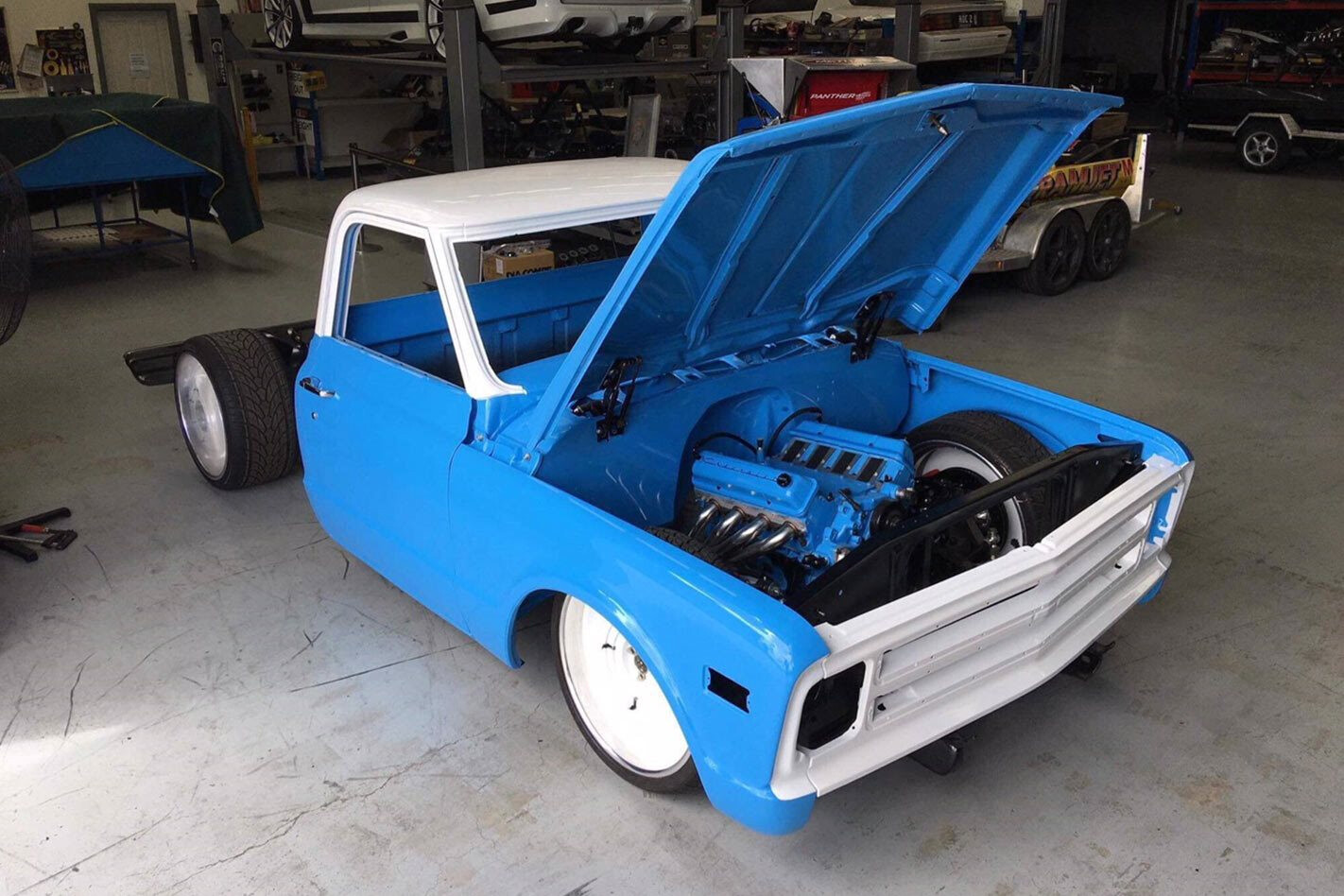Jason De Silveira purchased this 1970 Chevy C10 way back in 1996, not long after he began an apprenticeship as a mechanical fitter. “I bought it in bits, thinking I knew what I was doing,” he recalls. “The old chestnut – it looked like it was nearly finished and just needed to be put back together.”
First published in the August 2023 issue of Street Machine. Photos: Jordan Leist



As it turned out, the build ended up taking a good while, as Jason’s career took him overseas. He still chipped away at it over the years, but as his knowledge and financial situation improved, the direction and quality of the build also changed.
“When you’re an apprentice, [you buy] what you can afford then, but it usually means you end up doing it again,” Jason says. “This car’s had three paintjobs, three interiors and three engines, but once I found Grgic Bros, they just did it properly.”


Having had the car for so long, Jason’s ideas about the build have evolved over time. The truck used to roll on 15×15 Center Lines out back with a set of drop spindles, which Jason calls the first iteration of the build. “I built the first engine, a 400 Chev with a Pete Jackson gear drive, fuellie heads and all sorts of things in there. But when I looked back, I thought that maybe I didn’t check those clearances very well, and started second-guessing myself,” Jason explains. “So, I ended up selling that motor and bought an LS2.”
It was only when Jason took the C10 to Grgic Bros that an LSA came into the picture. They’d picked up a few from the US, knowing that with just a little bit of work you could get close to 600hp out of them. Well, they did that and a little bit more to Jason’s LSA, fitting a Comp 223/246-duration cam, Gilmer pulley kit on the blower, and a Holley EFI Terminator ECU. The end result was 620hp at the tyres! Love ’em or hate ’em, you’ve got to admit an LS is tough to beat when it comes to making easy horsepower.



While the engine is a pretty important factor in this build, it pales into insignificance compared to the work that’s been done to the C10’s body, chassis and interior. “One thing that Grgic Bros always told me was, ‘If it looks modified, it’s not done right,’” Jason says. “When you don’t know what it used to look like, you don’t question anything. People think it’s got a nice paintjob, nice engine and the stance is right, but I don’t think a lot of people can appreciate the amount of work that’s gone into that car.”
In a nutshell, the only original parts remaining are the chassis from just behind to just in front of the cab, and the cab itself. Every other panel has been replaced with new parts or heavily modified, which is one benefit of building something that’s immensely popular in the US – the aftermarket for them is massive!




You don’t get a stance like this with an angle grinder and oxy torch – although an angle grinder was definitely used in the creation of the new suspension. The C10 now sports Porterbuilt suspension all ’round– a front-end clip with tubular A-arms, drop spindles and rack-and-pinion steering, and out back, an eight-inch notch kit with tubular trailing arms. The whole lot rides on AccuAir self-levelling airbags with Koni shocks and massive Wilwood brakes on all four corners.
The final and crowning touch to the C10 was the absolutely stunning interior. Trucks from the 1970s aren’t exactly renowned for their luxurious cabins, but just like the exterior of Jason’s example, there isn’t much of the original stuff left inside. The basic shape of the dash and instrument cluster is unchanged, but the gauges are analogue-style items from Dakota Digital. The seats are from a VF SS, and the rest of the interior panels and console were fabricated out of aluminium by Grgic Bros and then trimmed in black leather by the very talented crew at Trimcare.


One of my favourite parts of the interior is the pattern that was stitched into the inserts and carries over to the door and kick panels. It breaks up the large expanse of leather, and the addition of red stitching really finishes it off nicely.
While Jason had a few cracks at getting the paint right, he’s stoked with how the boys at Leighton Panel & Paint have got it looking now. The Galaxy Grey covers pretty much everything, and the bits that used to be shiny either got chucked in the bin or painted in gloss black. It sounds like it could be a dull combination, but as you can see from the pics, that’s definitely not the case.

With suspension that handles, a modern engine, air conditioning and plenty of sound deadening in the interior, the C10 is a very civilised car to drive; apparently you can even talk hands-free on the phone! That useability means Jason can even take it to work a few times a week, and while it’s not a real long drive, I’m sure plenty of necks get snapped along the way.
JASON DE SILVEIRA
1970 CHEVROLET C10 SHORTBED
Paint: Galaxy Grey
| DONK | |
| Type: | 6.2L LSA |
| Blower: | LSA, Gilmer drive belt |
| ECU: | Holley Terminator |
| Heads: | LSA |
| Valves: | 2.165in (in), 1.590in (ex) |
| Cam: | Comp Cams 223/246 |
| Internals: | Standard |
| Radiator: | VZ Commodore |
| Exhaust: | Pacemaker headers, twin exhaust |
| Ignition: | Standard |
| SHIFT | |
| Transmission: | Hughes Turbo 400 |
| Converter: | AllFast 3500rpm |
| Diff: | 9in, Truetrac, 31-spline axles, 3.45:1 gears |
| BENEATH | |
| Front: | Porterbuilt front clip and rack-and-pinion steering, AccuAir airbags, Koni shocks |
| Rear: | Porterbuilt 8in notch, AccuAir airbags, Koni shocks |
| Brakes: | 14.25in drilled and slotted Wilwood discs with six-piston calipers (f), 11in drilled and slotted Wilwood discs with four-piston calipers (r) |
| ROLLING STOCK | |
| Rims: | KWC Forged; 20×8 (f), 22×10 (r) |
| Rubber: | Achilles Desert Hawk UHP; 255/45R20 (f), 285/35R22 (r) |
THANKS
Grgic Bros.



Comments